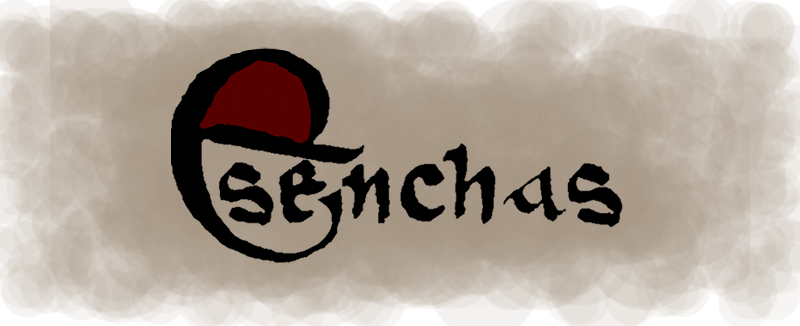
Scél asa mberar combad hé Find mac Cumaill Mongán ‘A Story from which it is inferred that Mongán was Finn mac Cumaill’ is the second of four tales concerning Mongán mac Fiachnai preserved as a group in the manuscript Lebor na hUidre ‘The Book of the Dun Cow’. It is Old Irish in date and may have been composed in the eighth century. Mongán himself is said to have died in 625, according to his obituary notice in the Annals of Ulster, in which his father Fiachnae is associated with Lurga (Co. Monaghan). Mongán’s character is developed in this tale, and in others associated with it. The tradition that he was killed by a stone is found in other annalistic compilations, including the Annals of Tigernach. Genealogical material associates him with the northern territory of Dál nAraidi and Dál Fiatach and records the names of a number of his sons. A wife of his, Dub Lacha, is noted in the genealogies and in the Banshenchas ‘Lore of Women’; Breóthigernd is recorded as his wife’s name in this tale.
This story tells of an exchange between Mongán and the poet, Forgoll. Mongán contradicts the poet on a point of detail concerning the Death-tale of Fothad Airgtech and is threatened with satire as a result. He pledges his wife to Forgoll if he cannot prove that he is right within three days. Caílte, a warrior who had taken part in the battle in which Fothad was killed and foster-son of Finn mac Cumaill, comes from afar and corroborates Mongán’s story. It becomes clear from his account that Mongán was in fact Finn. This tale, therefore, links the material concerning Mongán with that of Finn and the fíana. Moreover, it is concerned with a theme also found in Scél Mongáin, namely Mongán’s superiority over poets (in this instance the well-known poet, Forgoll).
Place-names play a key role in this text, as Mongán narrates Caílte’s journey across Ireland, starting in the south-west and working his way up to the north-east, washing his feet in a number of rivers along the way: Ásáe fer dotháet indossa diar cobair; adhaim a chossa hi Labrinni … hi Máin … hi Lemuin, hi Loch Léin, hi Samáir eter Uí Fidgente 7 Aradu, hi Siúir ar Femun Muman, hi nEchuir, hi mBerbi, hi Rurthig, hi mBoind, hi Níth, hi Rig, hi nOlarbi ar bélaib Rátha Móri. Below is a list of the river names given in the tale, with a discussion of their suggested identity and links to their location on a map.
Four tales concerning Mongán – Compert Mongáin ‘The Birth-tale of Mongán’, Scél asa mberar combad hé Find mac Cumaill Mongán ‘A Story from which it is inferred that Mongán was Finn mac Cumaill’, Scél Mongáin ‘A Story of Mongán’, and Tucait Baile Mongáin ‘The Cause of Mongán’s Vision’ – are attested, in this order, in the following manuscripts: Lebor na hUidre (Dublin, Royal Irish Academy 23.E.25); the Yellow Book of Lecan (Dublin, Trinity College 1318; H.2.16); Dublin, Trinity College Dublin 1363 (H.4.22); and Dublin, Royal Irish Academy 23.N.10. Scél asa mberar combad hé Find mac Cumaill Mongán is also attested in London, British Library, Egerton 88, where it appears alongside Compert Mongáin, and Dublin, National Library of Ireland, G7, where it appears alongside Scél Mongáin and Tucait Baile Mongáin. This and the other Mongán tales are likely to have been part of an earlier (now-lost) vernacular manuscript, Cín Dromma Snechtai ‘The Book of Drumsnat’.
The edited text provided here is based on the diplomatic edition of Lebor na hUidre produced by R. I. Best and Osborn Bergin (Dublin, 1929), pp. 334–5, to which the line numbers refer. The translation is taken from The Voyage of Bran, ed. and transl. Kuno Meyer (London, 1895), pp. 49–52.